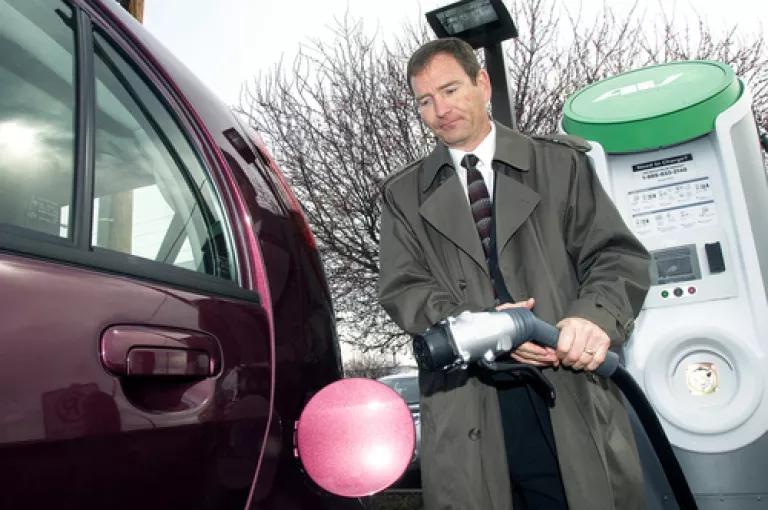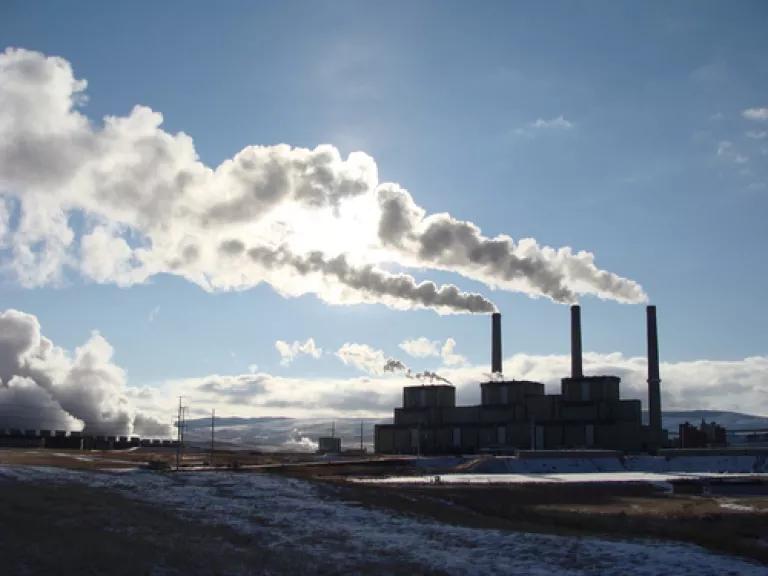Western Energy News Round-Up: Historic Climate Plan Inked and Energy Storage Targets Set, Efficiency and Renewables Cheaper than Fossil Fuels, Pollution Standards Increase Economic Opportunity, and Conservation Approaches Differ for Endangered Birds

Western Energy News Round-Up is a periodic selection of news highlighting recent energy and environmental issues in the western United States.
October 16-29, 2013
Renewable Energy:
California joins Oregon, Washington and British Columbia in climate action plan
Gov. Jerry Brown announced a regional agreement with Oregon, Washington, and British Columbia to align policies for combating climate change. Called the Pacific Coast Action Plan on Climate and Energy, the pact commits to a leadership role in national and international climate change policy by agreeing to emissions reduction targets; to transition the West Coast to cleaner modes of transportation such as high-speed rail; and to invest in clean energy and infrastructure.
(San Francisco Bay Guardian, October 28, 2013)
California Adopts Historic Energy Storage Targets
The California Public Utilities Commission set a target for California investor owned utilities to procure 1.325 GW of cost effective energy storage by 2020. The target, which is the largest of its kind worldwide, is set to increase California's installed energy storage capacity six fold from its current 35 MW.
(Sacramento Bee, October 17, 2013)
NRDC Blog: The World's #1 Fuel Source Isn't Even a Fuel
The first ever Energy Efficiency Market Report was just released by the International Energy Agency, and it clearly illustrates for the 11 countries it examined that between 1974 and 2010, energy efficiency was the largest energy resource. In 2010, alone, savings from energy efficiency was greater than the output from any other single fuel source – including coal, oil, nuclear and gas.
(NRDC Switchboard, October 18, 2013)
In sunny Arizona, a battle over solar power
In November, the Arizona Corporation Commission (ACC) will consider the state's largest utility's request to drop rates for net metering. For the solar industry, if rates drop to a point at which solar panels aren’t economically viable in Arizona, sales could plummet.
(Washington Post Governor's Beat Blog, October 16, 2013)
UPDATE: The controversy became even more heated when it was revealed that the Arizona utility in the middle of the fight bankrolled anti-solar groups, to which it had previously denied any ties.
Solar panels at the Visitor Center on the South Rim of Grand Canyon National Park (Photo by Grand Canyon National Park under Creative Commons licensing)
How clean energy boosts Idaho dairies’ profits
Idaho’s new clean-energy businesses have found ready customers on the state’s dairy farms. Solar energy and energy efficiency measures are being adopted to increase production and save costs.
(Idaho Statesman, October 15, 2013)
Op Ed: Colorado's solar rooftops deliver millions in benefits
Xcel Energy recently announced a proposal to add an impressive and laudable 170 megawatts of large, utility-scale solar energy to its portfolio, citing that investment in its own solar generation will save ratepayers up to $50 million. Yet at the same time, Xcel is also opposing net metering for small-scale customer-owned solar systems at the Colorado Public Utilities Commission (PUC).
(Denver Post, October 25, 2013)
First-ever auction of solar-zone parcels draws no bids
A first-ever competitive auction held in Colorado that was supposed to drive future development of commercial-scale projects inside solar energy zones across the Southwest drew no industry bids. The auction results startled top officials with the Bureau of Land Management, who conceded the agency may now have to go back and review its plans to get developers to commit to projects inside the two solar energy zones (SEZs) up for bid at today's auction in Colorado, as well as 17 other SEZs spread across six Southwestern states.
(E&E, October 25, 2013)
Guest Editorial: California’s clean energy pays off for all consumers
Dozens of utilities across California are underwriting thousands of efforts to reduce energy waste that costs Californians literally billions of dollars annually. These incentives reach every sector of the economy, and have been coordinated for decades with regularly upgraded efficiency standards covering everything from flat screen TVs to office buildings.
(Electricity Policy, October 18, 2013)
Clean Fuels and Vehicles:

Not just another tank: plugging in an electric car at a charging station. (Photo by Oregon Department of Transportation under Creative Commons licensing.)
Governors Announce New Initiative to Put 3.3 Million Zero-Emission Vehicles on the Road by 2025
Governors from eight states including Oregon announced a new initiative to put 3.3 million zero-emission vehicles on the roads within a dozen years. The eight states, which comprise nearly 25 percent of the American vehicle market, will promote the use of clean vehicles through a program designed to expand consumer awareness and demand for zero-emission vehicles.
(Statesman Journal, October 24, 2013)
Oregon DOJ says low-carbon fuel standards can proceed, in spite of lawsuit
Oregon's DOJ analyzed whether a recent ruling by the 9th U.S. Circuit Court of Appeals established that carbon fuel regulations in California and Oregon violated federal law, which pre-empts many state regulations. According to the DOJ, the state is in the clear.
(The Oregonian, October 21, 2013)
Fossil Fuels:
Coal: Big Sky ranchers, industry collide over exports, pollution
Ranchers are butting heads with the coal industry over the companies' efforts to boost exports to Asia from the Pacific Northwest. Some ranchers worry expanded mining will poison shallow aquifers in their corner of the Powder River Basin.
(E&E, October 23, 2013)
Montana Chamber should support pollution standards
Renewable energy installers are optimistic because industry-wide carbon standards for power plants will not only reduce carbon pollution, they will help accelerate Montana’s growing clean energy economy. We can address climate change and increase economic opportunity at the same time.
(Independent Record, October 17, 2013)
Utilities:

Coal-fired power plant in Craig, Colorado (Photo by Jimmy Thomas under Creative Commons licensing)
NRDC Blog: Dirty Coal is Getting Priced Out and in the West, Shut Down
The economics of energy are changing. It’s good news for our health and the planet that it’s cheaper for utilities to buy clean energy -- renewables and efficiency -- than fossil fuels to generate electricity for our homes and businesses. Recent bids accepted by utilities for large-scale wind and solar purchases are at historic lows, with utilities in Colorado and New Mexico buying renewable energy because it’s cheaper than fossil fuel.
(NRDC Switchboard, October 22, 2013)
Nevada Utility: Efficiency Can Cut Grid Management Costs by 25%
NV Energy, the largest utility in Nevada, has unveiled some compelling data on how energy efficiency and demand response benefit the grid. It reported that the avoided cost for transmission and distribution upgrades to meet peak demand was one quarter the total cost-per-kilowatt of maintaining the grid.
(Green Tech Media, October 21, 2013)
Viewpoints: Coal mine methane offsets are a bad fit for California and its clean energy law
California’s historic clean-energy law could become a $300 million source of new revenue for the coal industry if a state regulatory agency votes today to allow California’s major polluters to offset their emissions by purchasing credits from methane-reducing projects at coal mines located primarily out of state. None of the additional benefits that can accompany greenhouse gas emission reductions – like new jobs from emissions controls and decreases in toxic air pollutants that harm our health – will occur in California.
(Sacramento Bee, October 25, 2013)
Conservation:
Feds propose listing sage grouse sub-population as threatened, angering energy developers
Federal wildlife officials proposed to list populations of greater sage grouse in Nevada and California as threatened in an effort to save the struggling species. The U.S. Fish and Wildlife Service found that invasive species and energy development in the desert have had a devastating effect on the large, ground-dwelling bird's populations
(The Republic, October 25, 2013)
Lesser prairie chicken plan welcomed by Udall, Pearce; condemned by enviro group
The Western Association of Fish and Wildlife Agencies released a conservation plan for the lesser prairie chicken that avoids listing the species as endangered, but rather calls on voluntary conservation. State officials, the oil and gas industry and others had opposed such a listing because they said the economic impacts would be too high, while the Center for Biological Diversity slammed the plan as inadequate.
(New Mexico Telegram, October 23, 2013)
Obituaries:
Clean energy lost two great champions this month.
Bob Anderson, 70, a noted Montana conservationist, wilderness advocate and three-term member of the Montana Public Service Commission, died on Oct. 10, 2013.
(Helena Independant Record, October 27, 2013)
Conley Ward, who grew up in Owyhee County, went to Columbia University and enjoyed a distinguished career as a utilities regulator and lawyer, died Monday night at his home in Kuna.
(Idaho Statesman, October 30, 2013)
Compiled by Meredith Connolly
